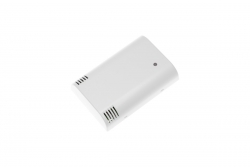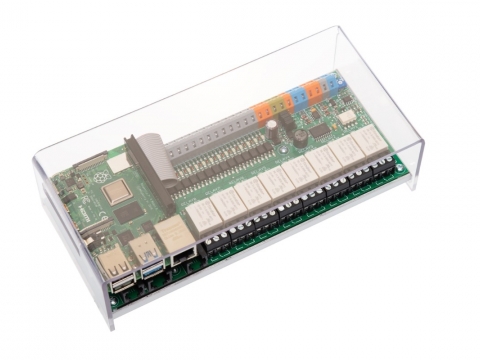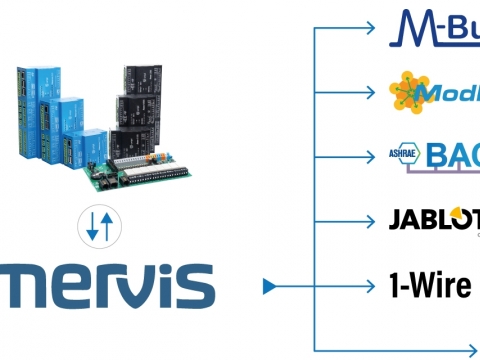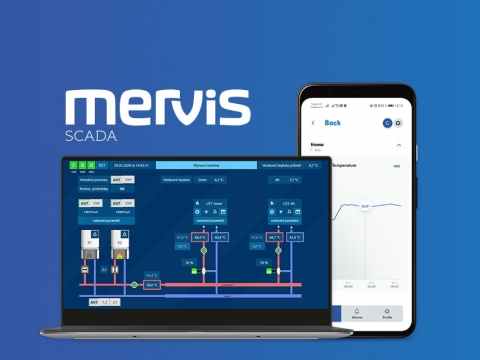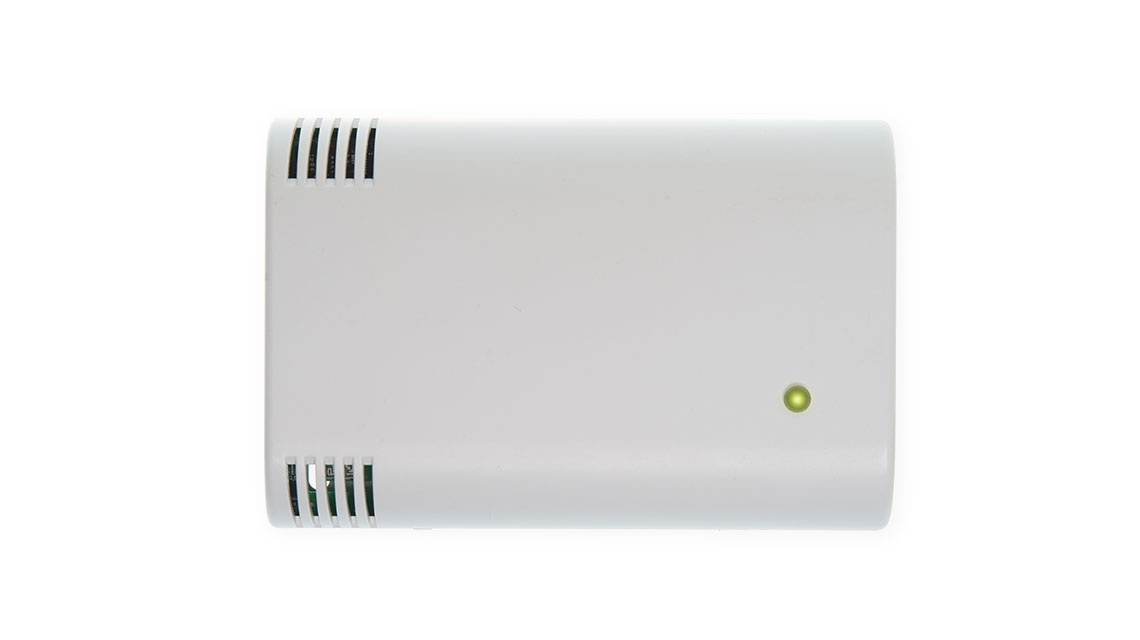
Unipi indoor air quality sensors feature the ability to measure up to six parameters, broad connectivity including wireless technologies, easy installation and compact design.
Do you know what you breathe?
The Sick Building Syndrome recently became a frequently discussed topic. This term encompasses health problems caused by the insufficient air quality in indoors of office buildings or schools. These problems include headaches, breathing problems, allergic reactions or trouble with maintaining focus.
Indoor air quality is decreased by several risk factors, notably a high concentration of carbon dioxide, presence of volatile organic compounds (VOC), high/low air humidity or overheating/underheating. Also present may be window condensation resulting in mildew. These issues have their source mainly in technical deficiencies of the said building such as insufficient air conditioning, non-suitable heating control or thermal insulation that restricts micro ventilation.
Unipi sensors as a solution
The first step in solving these issues is the ability to monitor indoor air quality in long term to obtain relevant data as a basis for required modifications (installation of improved air conditioning, improvements of heating control, installation of more suitable windows etc.). The Unipi indoor air quality sensors were designed exactly for such a task, combining compact design, easy installation, the ability to measure up to six parameters and broad connectivity including wireless technologies.
What are the main advantages of Unipi indoor air quality sensors?
- measuring of up to six parameters (temperature, humidity, CO2 concentration, VOC concentration, barometric pressure and ambient light intensity),
- compact size, easy on-wall installation,
- simple connection, start-up and configuration via Wi-Fi,
- broad connectivity (RS485, Wi-Fi, LoRaWAN),
- support of various communication protocols (Modbus TCP, Modbus RTU, MQTT, REST),
- web interface for measured data visualisation and device configuration,
- data are relayed to monitoring and regulation systems,
- a multi-coloured LED for indication of air quality and device status.
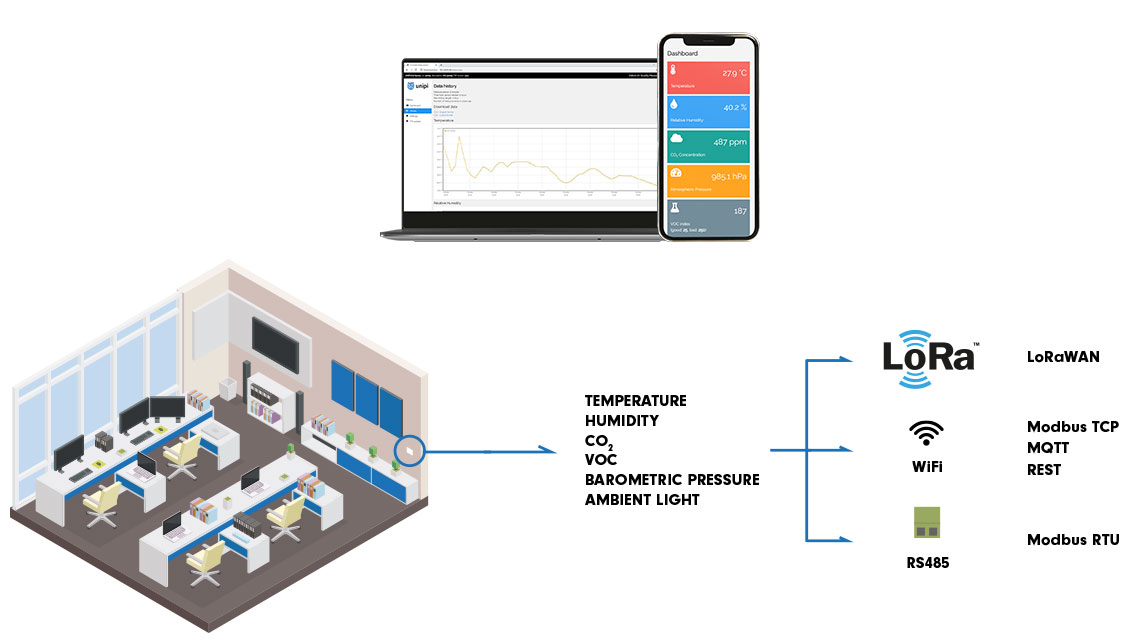
Hardware description

The sensor is mounted in a compact design box made of ABS plastic (IP20 protection). The box is intended for on-wall installation and is designed to provide easy access to the sensor’s circuit board. The sensor features a terminal block for connection of power supply and RS485 serial bus, also available is a MicroUSB power supply connector. The sensor can be powered in two ways - you can either utilize the 24V@0.5A power supply, or you can use a MicroUSB power supply cable with elongated MicroUSB connector. Both types can be purchased on Unipi e-shop.
The sensor is also equipped with a multi-coloured LED. For models featuring a CO2 sensor, the LED indicates carbon dioxide concentration (green = low concentration, red = high concentration). For variants lacking the CO2 functionality, the LED then indicates air quality index roughly equivalent to CO2 concentration. In all models, the LED has a secondary function of indicating wireless communication and device status.
Users can also adjust the LED’s brightness or turn it off entirely. Brightness adjustments and on/off switching can be also controlled automatically by a pre-set time schedule or ambient light intensity. In hotel rooms or bedrooms, for example, the LED can be configured to turn off along with the room’s light to prevent sleep disturbance by the LED’s light.

LED indicator colour scale
User interface
Sensors are provided with web user interface for displaying measured values and device management including the option of remote firmware updates. A particularly useful feature is the option to store all measured values for up to 7 days. Values can be displayed directly in the interface or exported as an Excel file (CSV).
.png) Web user interface screenshot
Web user interface screenshot
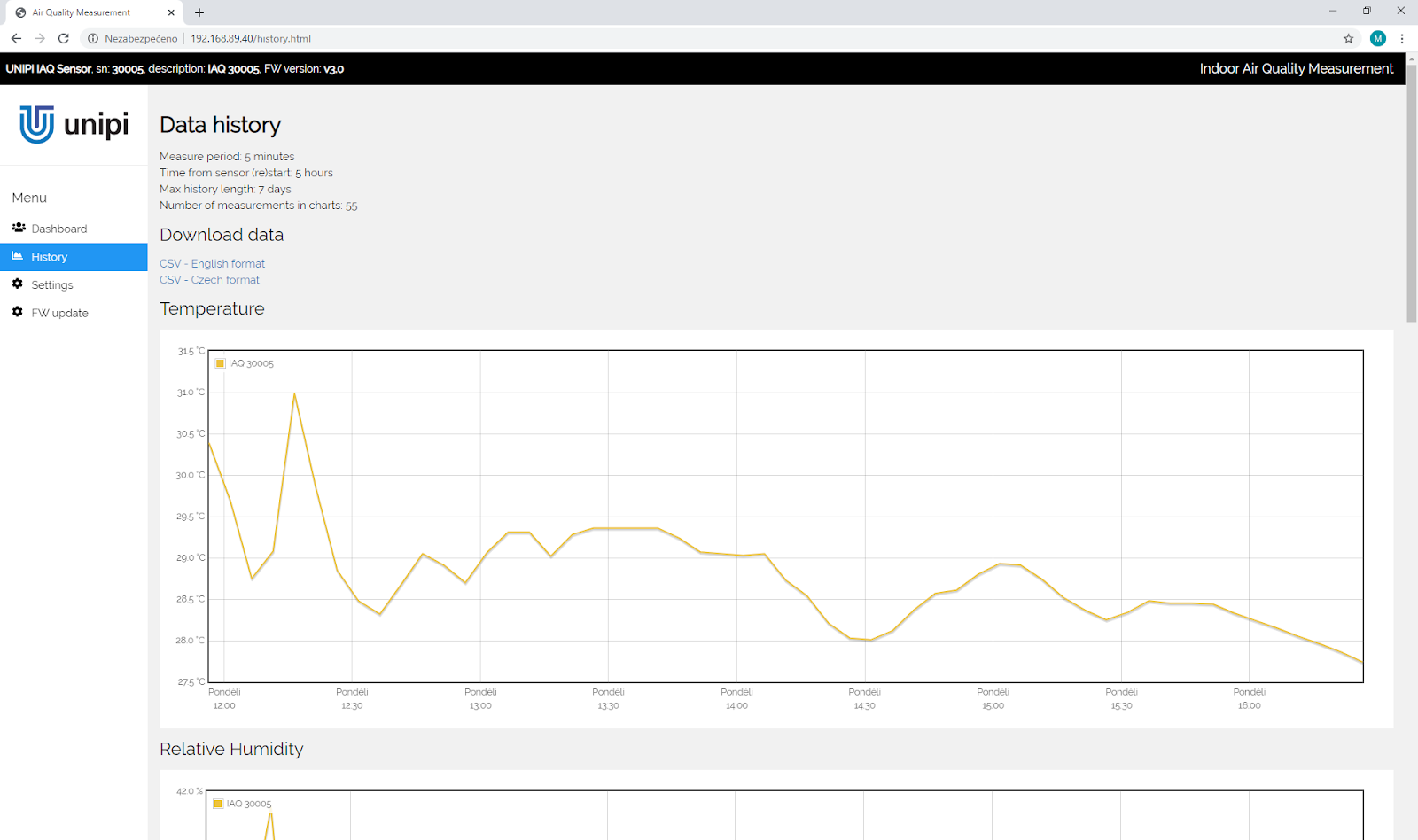
An example of visualisation of measured data via graphs
Communication interfaces

The primary communication interface of indoor quality sensors is a wireless Wi-Fi connection. For initial configuration, the device acts as a Wi-Fi access point. For regular usage, the sensor then switches to Wi-Fi client mode. Wi-Fi interface supports communication via Modbus TCP, MQTT (including encoded connection support) and REST API.
The second interface is the RS485 standard serial bus for communication via Modbus RTU. The sensor functions as a Modbus slave, serial line and TCP parameters can be configured as needed.
Selected models also feature LoRaWAN bidirectional wireless communication technology. You can either use existing networks of LoRaWAN connectivity providers or create private networks. These can cover large areas (multi-storey buildings, factory halls, shopping centres etc.) due to LoRaWAN’s very long signal range of up to several kilometres. For more information about possible applications of Unipi IAQ sensors with LoRa interface, visit the Integration of an IoT indoor air quality sensor with LoRa communication case study.
Note: To use LoRaWAN you need to register the sensor at the public operator or in a database of a private LoRaWAN gateway. Unipi technology currently does not offer LoRaWAN gateways.
Software options
Indoor air quality sensors are supported by the Mervis system - the official software solution for Unipi programmable logic controllers. Sensors function as Modbus devices and for their connection into the Mervis IDE development environment, you need only to add a corresponding communication channel and detect the sensor on it. More information about Mervis is available on this link.
Aside from Mervis, the sensors can be connected to other software solutions (ie. third-party software such as Node-RED or your custom solutions) using any of the available communication protocols (see above).
Available model overview
| Model | Temp. | Humidity | CO2 | VOC | Bar. pressure | Ambient light | LoRaWAN | Wi-Fi host/AP |
RS485 Modbus RTU |
| RW-TH |
✓ |
✓ |
× |
✓ |
✓ |
✓ |
× |
✓ |
✓ |
| RLW-TH |
✓ |
✓ |
× |
✓ |
✓ |
✓ |
✓ |
✓ |
✓ |
| RW-THC |
✓ |
✓ |
✓ |
✓ |
✓ |
✓ |
× |
✓ |
✓ |
| RLW-THC |
✓ |
✓ |
✓ |
✓ |
✓ |
✓ |
✓ |
✓ |
✓ |
Where you can utilize indoor air quality sensors?
Thanks to its features Unipi indoor air quality sensors are applicable in a wide range of uses. Aside from air quality monitoring in households, commercial objects or school buildings the sensors can be also useful in monitoring and regulation projects. Here, you can use measured values for control and regulation of air conditioning, heating, heat recovery units and other similar devices.
